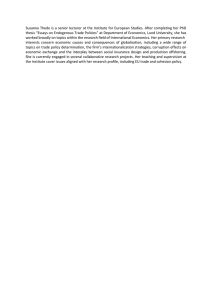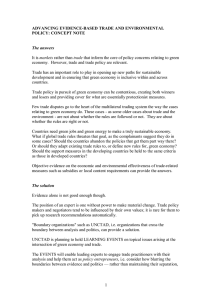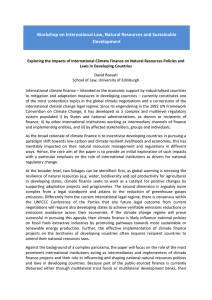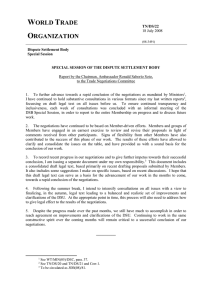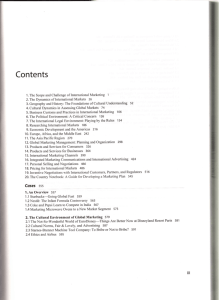TITLE OF What’s the use of a RESEARCH PAPER transatlantic free trade
advertisement
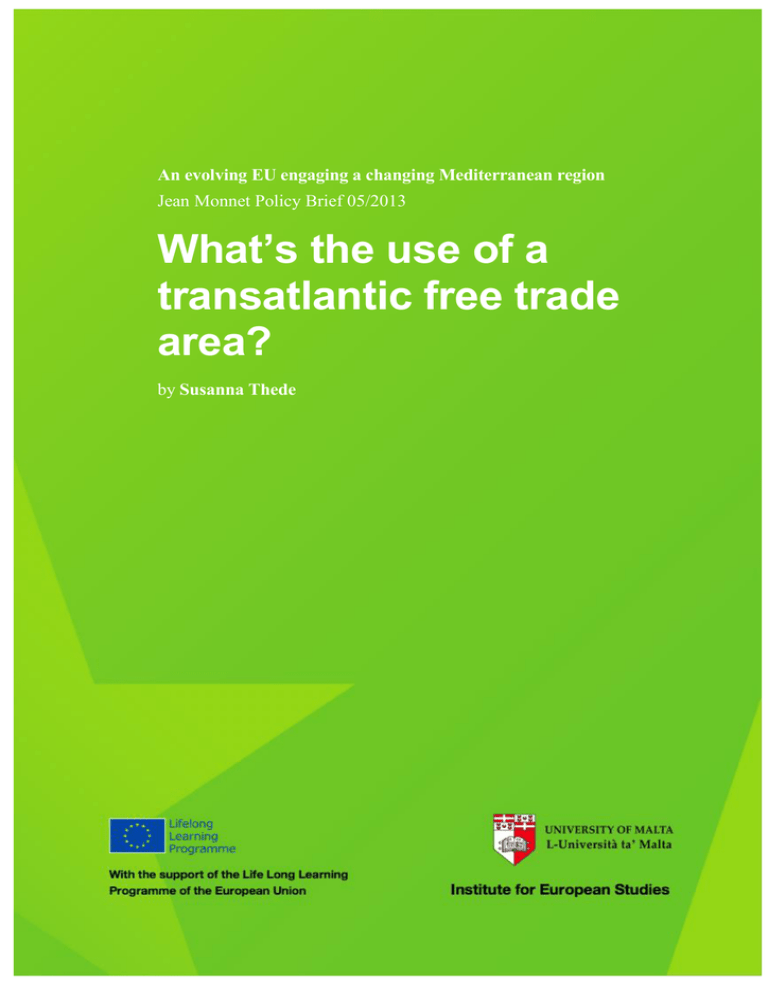
Name of project An evolving EU engaging a changing Mediterranean region TITLE OF What’s the use of a RESEARCH PAPER transatlantic free trade area? Jean Monnet Policy Brief 05/2013 by Name of Author by Susanna Thede The Institute for European Studies The Institute for European Studies is a multi-disciplinary teaching and research Institute at the University of Malta, offering courses in European Studies which fully conform to the Bologna guidelines, including an evening diploma, a bachelor’s degree, a masters and a Ph.D. The Institute also operates a number of Erasmus agreements for staff and student exchanges. Founded in 1992 as the European Documentation and Research Centre (EDRC), the Institute was granted the status of a Jean Monnet Centre of Excellence in 2004. The Institute is engaged in various research and publication activities in European Integration Studies and is a member of the Trans-European Policy Studies Association (TEPSA), the LISBOAN network, EPERN, EADI, and the two Euro-Mediterranean networks, EuroMeSCo and FEMISE. The Institute is also a member of the Council for European Studies (hosted at Columbia University). The research interests of its staff include comparative politics and history of the European Union (EU); EU institutions; EU external relations and enlargement; small states in the EU; Malta in the EU; Euro-Mediterranean relations; Stability and Growth Pact; economic governance of the euro area; Europe 2020; EU development policies, climate change, international economics, economic causes and consequences of globalisation and EU trade and cohesion policy. Policy Briefs Policy briefs should be submitted to Professor Roderick Pace, Director of the Institute for European Studies, at roderick.pace@um.edu.mt. They should not exceed 3000 words including references, which should be kept to a minimum. The JM Policy Briefs do not necessarily reflect the views of the Institute for European Studies but those of the author. This project has been funded with the support from the European Commission. This publication reflects the views only of the author, and the Commission cannot be held responsible for any use which may be made of the information contained therein. Grant no. 2012-2690. What’s the use of a transatlantic free trade area? For many of those who remember the hostile EU-US trade relations of the 1980’s and the various trade disputes that have emerged between these two trade partners since then, the opening of negotiations on a joint free trade area would be good news. Strengthened trade cooperation between the partners holds the promise of expanding their mutual exchange of goods and services, not the least by solving obstacles to integration on less transparent issues such as the extent to which product characteristics should be defined by their regional characteristics (e.g. can Budweiser be produced outside the Budweis region in the Czech Republic?). While EU and US tariff barriers to trade are already down at levels of a few percentage points in most sectors, much remains to be done in reducing and streamlining the trading partners’ procedures on other, non-tariff, trade barriers. It is however questionable whether the political will is strong enough to target “infected” areas such as the EU’s Common Agricultural Policy, which could lead to more substantial efficiency and consumer gains. Insofar as a far-reaching agenda is put on the table in the negotiations, it is not clear whether the full implications for the everyday lives of EU and US citizens are identified. For example, will EU citizens still have the opportunity to ensure that some potentially hazardous food products do not end up on their plates and will US citizens have the freedom to purchase gasoline at low tax levels that may be under-pricing the social costs of gasoline use? One of the major arguments against the transatlantic free trade area (TAFTA) is that it will undermine what is left of the belief in the Doha round. Much can be said about the benefits of the multilateral trading system, including that it is transparent in the sense that all countries abide by the same set of rules and liberalise trade according to a common agenda. As economic market size is translated into bargaining power in trade policy negotiations, it is not hard to understand the apprehension of the poorer WTO member states who face the prospects of a general abandonment of the multilateral trading system. While in theory, a TAFTA agreement could provide a sufficient power shift for EU and US policymakers to reinvigorate the trading system, such developments are entirely up to the political agenda setters in Brussels and Washington. Given the multitude of regional trade agreements that are now in place, it is very hard to identify the economic implications of establishing yet another agreement. In particular, the fact that the EU is currently in a free trade agreement with Mexico and negotiations are underway to complete one with Canada implies that the TAFTA agreement can have some negative repercussions for Mexico and Canada if the US concludes a better deal with the EU. Ironically, this is a primary example of the effects that engagement in bilateral instead of multilateral trade liberalisation schemes can have insofar that the largest players usually secure the best deals. There is no doubt that there are EU and US welfare gains to be made from a TAFTA agreement, which can explain why leading quarters in Brussels and Washington are moving forward towards negotiations at a time when their economies are in need of much increased growth and more job creation. Indeed, it is reasonable to argue that the main goal of policy makers should be to look after the welfare of their citizens. Yet, there are good reasons not to hasten an agreement that can have a profound impact on people’s lives without anchoring the decision in a clear approval by voters. For instance, the strengthened measures to protect intellectual property-rights which are likely to result from a deal, could help artists make a living and/or boost the position of large multinational media conglomerates. The resulting outcomes of an agreement are a matter of legislative design, which should be placed at the forefront of the policy discussion. Policy makers would be wise to make the best of this opportunity to align their negotiating positions with voter perceptions by engaging EU and US citizens in the content of a prospective agreement. Otherwise, they may end up with more than they bargained for initially. Dr Susanna Thede is a senior lecturer at the Institute for European Studies. After completing her Ph.D. thesis “Essays on Endogenous Trade Policies” at the Department of Economics, Lund University, she has worked broadly on topics within the research field of International Economics. Her primary research interests concern economic causes and consequences of globalisation, including a wide range of topics on trade policy determination, the firm’s internationalization strategies, corruption effects on economic exchange and the interplay between social insurance design and production offshoring. She is currently engaged in several collaborative research projects. Her teaching at the Institute covers issues aligned with her research profile, including EU trade and cohesion policy. Dr Thede can be reached at susanna.thede@um.edu.mt.
